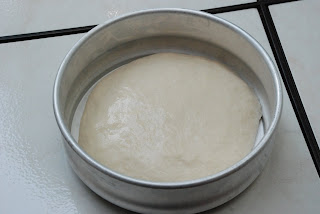
This simple and appropriately colored dish is a refreshing and somewhat healthy snack or dessert. By the way, happy Memorial Day to everyone and a great big Thank You to our veterans and soldiers both living and deceased!
Greek Yogurt With Macerated Blueberries and Strawberries
1/2 c Greek yogurt
3 tbsp sugar
1/4 c strawberries, sliced
1/4 c blueberries
Macerate the berries by adding 2 of the tbsp of sugar to the berries, mix well and let sit for 20 minutes. Mix the remaining tbsp of sugar into the yogurt. Once the berries are nice and juicy, put half the berry mixture in the bottom of your bowl, cover with yogurt and put the remaining berry mixture on top. Enjoy! :-)
A quick word about Greek yogurt. Unless you get the yogurt from Greece, it won't really be much different than regular yogurt except the majority of the whey will have been removed to get the thicker consistency associated with Greek style yogurt. With that said, if you take regular yogurt and drain the whey out by using a coffee filter and a colander, you will get a very similar result. Simply put a coffee filter in a colander and put the yogurt in the coffee filter. Put a bowl under the whole contraption to catch the whey. You can use the whey for other recipes if you like. The process takes a few hours and I typically do it overnight in the fridge. I have been using this technique for years for baked potato topping, sauces, dips and dressings. It really is a great substitute for sour cream.
TTFN
B

















